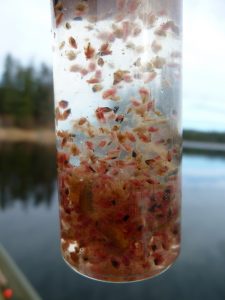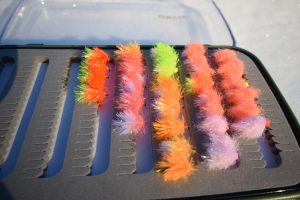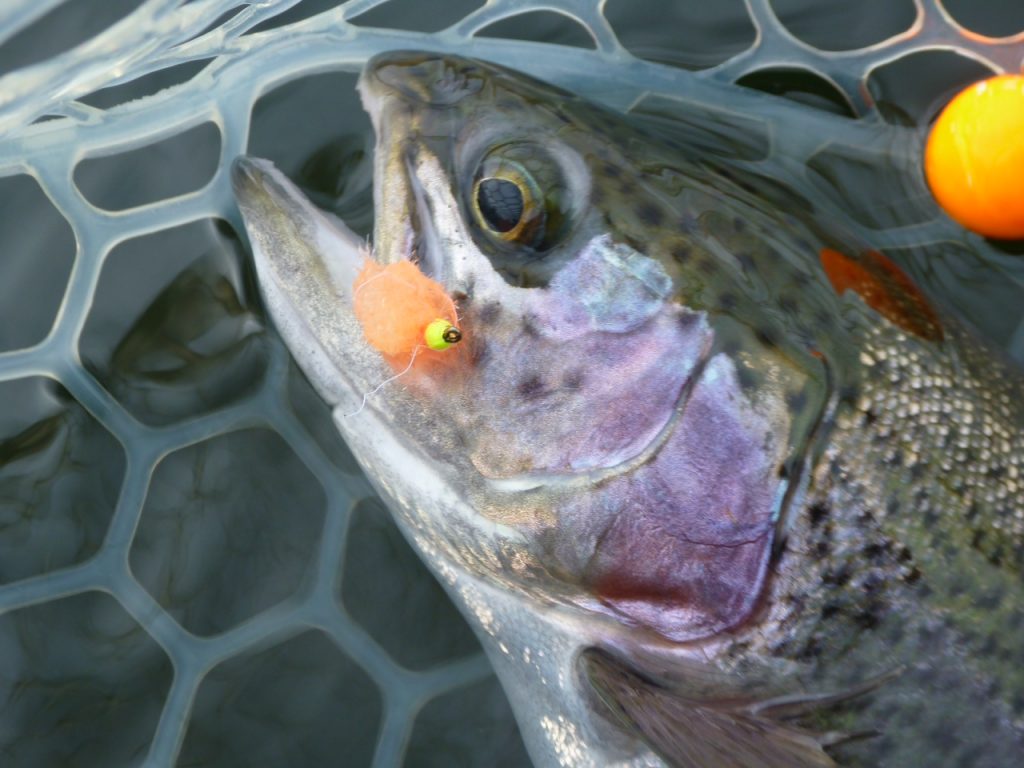Expert Advice
Blobbing for Trout? Yes, it’s a Thing
Fly fishing tactics and strategies are continually evolving regardless of the environment of the fish species we chase. Over the past several years on the stillwater scene there has been renewed interest in mastering the zooplankton pattern puzzle.
What are zooplankton?
Zooplankton are tiny members of the class Crustacea and are common inhabitants of all lakes and ponds regardless of size. In productive stillwaters, zooplankton can make up a large portion of the seasonal diet of trout and char. Anglers are probably more familiar with Daphnia, one of the most common species of zooplankton found in trout lakes.
 Daphnia and other zooplanktors form large bands or congregations within the water column. They are sensitive to light and make daily vertical migrations up and down through the water column. Their colouration can vary from a light, translucent olive to yellowish brown to reddish-brown and almost black.
Daphnia and other zooplanktors form large bands or congregations within the water column. They are sensitive to light and make daily vertical migrations up and down through the water column. Their colouration can vary from a light, translucent olive to yellowish brown to reddish-brown and almost black.
Why do they matter to trout?
Daphnia make an easy meal for foraging fish. Trout simply swim through the bands of concentrated zooplankton and use their gill filaments and rakers to funnel literally thousands of the tiny crustaceans down into their gullet.
Historically, when fish are found feeding on Daphnia and other zooplanktors, the fishing has often been challenging. We have often resorted to stripping or trolling bright attractor leeches or woolly buggers in an effort to get an aggressive fish to bite. Imitating daphnia has meant developing patterns that represent a small cluster of these tiny food items.
How do I imitate zooplankton?
The availability of newer tying materials such as Fritz, Gelly Fritz and Daphnia Fritz have been a very welcomed addition to developing patterns that are more consistent in fooling stillwater trout and char. Much of the creation of such materials originates in the UK, the birthplace of Stillwater fly fishing.
 Blobs imitate a small cluster of zooplankton be it Daphnia, Cyclops or Bosmina, all common in productive lakes. These patterns need to be suspended or slowly stripped through the depth zone that the zooplankton is suspended, bearing in mind their sensitivity to light. Productive blob colours include Biscuit, Sunburst, Pink, Coral, Safety Orange, Yellow and Melon. These core colours are often paired with Translucent White, Diamond White or Milk to produce a two toned pattern. Most of the fritz materials are also produced in an ultra violet version to further enhance their underwater appearance.
Blobs imitate a small cluster of zooplankton be it Daphnia, Cyclops or Bosmina, all common in productive lakes. These patterns need to be suspended or slowly stripped through the depth zone that the zooplankton is suspended, bearing in mind their sensitivity to light. Productive blob colours include Biscuit, Sunburst, Pink, Coral, Safety Orange, Yellow and Melon. These core colours are often paired with Translucent White, Diamond White or Milk to produce a two toned pattern. Most of the fritz materials are also produced in an ultra violet version to further enhance their underwater appearance.
When should I fish blobs?
Zooplankton feeding is often more prevalent during the early spring, mid-summer and late fall periods. These are all times when aquatic insect emergences are at a minimum and other food sources are not as readily available.
A depth sounder/fish finder is a valuable tool in determining at what depths the zooplankton are most concentrated. A throat pump sample will also verify zooplankton feeding and also whether it is light or intense.
The zooplankton puzzle is by no means solved but blob style patterns using proven fish catching colours go a long way towards increasing our success rates.
-Brian Chan
For more stillwater tips like this, make sure to follow Brian Chan and Phil Rowley at Stillwater Fly Fishing and Fly Tying on Facebook for news about the upcoming release of their stillwater fishing app.
As a guide, seminar host, successful author, and retired fisheries biologist, you’ll be hard pressed to find a more passionate and influential angler in all of British Columbia than Brian Chan. Based out of Kamloops, he enjoys spending time on local lakes when he isn’t reaching for then ends of the earth for his next adventure.



I like what I ,m reading about the blob vic